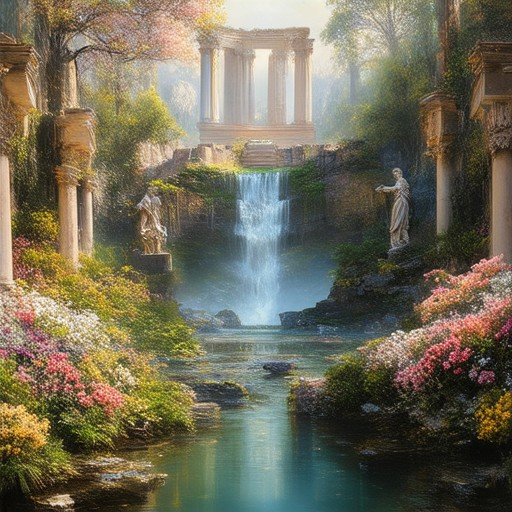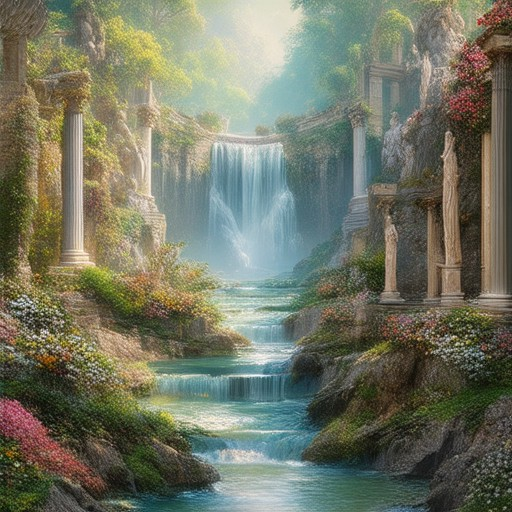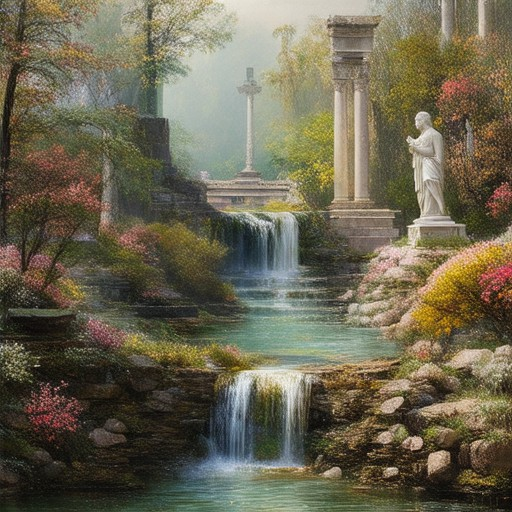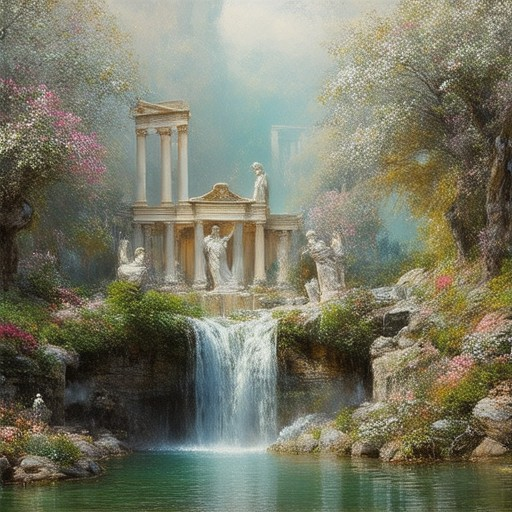When embarking on a creative journey, finding the right source of inspiration is crucial for every artist and designer. Whether it’s through nature, history, people, or personal experiences, there are countless avenues to explore that can spark your creativity and lead to groundbreaking designs. From traditional art forms to modern digital tools, this article delves into the top sources and techniques that can help you unlock your full potential and discover fresh ideas for your projects. By understanding where to look and how to channel your inspiration effectively, you can transform ordinary concepts into extraordinary creations that stand out.
Key Takeaways
- Top Design Inspiration Sources: Explore platforms like Artful Journey, Behance, Dribbble, and Design Spells for diverse creative resources and trend insights.
- Designer Inspiration Origins: Draw from introspection, social observations, everyday surroundings, music, nature, architecture, history, literature, travel, and online communities.
- Overcoming Creativity Blocks: Utilize creative communities, set challenging projects, employ visual tools like Pinterest, watch tutorials, engage with sketch apps, seek real-world inspiration, collaborate, reflect on past work, experiment with new materials, and stay trend-aware.

What is Your Inspiration for Art?
Your inspiration for art can come from a variety of sources, and discovering it often requires curiosity and intentionality. Here are some key ways to find inspiration:
- Nature and the World Around You : Explore the beauty of the natural world, whether through observing landscapes, studying plant and animal patterns, or admiring the colors of a sunset. Nature often provides universal themes that resonate with many people.
- Personal Experiences and Memories : Reflect on meaningful moments in your life. A childhood memory, a recent trip, or a significant event can serve as powerful catalysts for artistic expression.
- Artists and Creators Who Inspire You : Study the works of artists whose styles or subject matter you admire. Visit galleries, museums, or online platforms like Artful Journey to explore diverse artistic movements and perspectives.
- Cultural and Historical Contexts : Delve into the history of art to understand how different cultures and eras approached creativity. This can provide fresh ideas and frameworks for your own work.
- Music, Literature, and Other Arts : Many artists draw inspiration from music, literature, or theater. Listen to songs, read books, or watch performances that evoke emotions or ideas you want to capture in your artwork.
- Experimentation and Play : Don’t hesitate to play with materials, techniques, and subjects. Sometimes, the act of experimenting can lead to surprising discoveries that inspire new directions in your art.
Remember, inspiration is a journey. Keep your eyes open, explore different avenues, and let your creativity guide you to new possibilities. Visit Artful Journey for more resources and insights to fuel your artistic journey.
What is the inspiration for the design?
Our design process draws inspiration from a diverse array of sources, each contributing uniquely to the creation of meaningful and impactful experiences. Here’s a breakdown of our primary sources of inspiration:
- Art and Culture : We are deeply influenced by the rich tapestry of global art movements, including modern and contemporary art, as well as traditional craftsmanship. Artists like Klimt and Matisse continue to inspire our color palettes and compositions, while indigenous artforms remind us of the importance of storytelling and symbolism.
- Nature and Environment : The natural world serves as a constant source of wonder and innovation. Our designs often reflect the organic patterns found in flora and fauna, such as the intricate veins of a leaf or the abstract shapes formed by flowing water. Exploring regions like Patagonia or Bali provides endless opportunities to study textures and colors that inspire our collections.
- Travel and Exploration : Every journey offers unique perspectives that shape our creativity. From the vibrant streets of Rome to the minimalist landscapes of Sardinia , travel broadens our视野,激发我们的创造力。我们从这些经历中汲取灵感,创造出独特的设计元素。
- Emotion and Human Experience : Our designs are driven by the emotions and experiences that resonate with users. Whether it’s the nostalgia evoked by retro aesthetics or the excitement of cutting-edge technology, we aim to create designs that connect emotionally, making products feel intuitive and personal.
- Digital Tools and Innovation : As technology evolves, so does our approach to design. We experiment with digital tools like AI and machine learning to explore new ways of visualizing and creating designs, ensuring our work remains fresh and forward-thinking.
- User Feedback and Iteration : Engaging with our audience is a cornerstone of our design process. Through surveys and beta testing, we gather insights that guide refinements, ensuring our solutions truly meet user needs and preferences.
By blending these influences, we strive to create designs that are not only visually stunning but also functional, thoughtful, and deeply resonant with those who use them.

What Are the 4 Inspirations of Art?
Art is a versatile medium that draws inspiration from various sources, allowing creators to express themselves uniquely. Here are the four primary sources of inspiration for creating art:
- Personal Experiences : Life events, emotions, and memories often serve as catalysts for artistic creation. Artists frequently draw from their own experiences, translating personal feelings into visual or auditory forms.
- Nature and the Environment : Nature provides endless inspiration, from the intricate patterns of leaves to the vastness of the ocean. Many artists find solace and creativity in the beauty of the natural world, incorporating elements like textures, colors, and shapes into their work.
- History and Culture : Art is deeply rooted in cultural heritage and historical contexts. Artists often study past movements, iconic works, and societal norms to create pieces that reflect or challenge the values of their time.
- Other Artists and Contemporary Works : Observing fellow artists’ creations can spark new ideas and techniques. Artists may pay homage to predecessors or experiment with styles they’ve seen elsewhere, leading to fresh and innovative outcomes.
These sources of inspiration allow artists to explore diverse themes and mediums, contributing to a rich and dynamic artistic landscape.

Where Can I Find Good Design Inspiration?
Design inspiration can be found in numerous places online, each offering unique perspectives and trends. Here’s a curated list of top resources to spark your creativity:
-
Artful Journey
Explore a wealth of creative resources and articles designed to inspire artists and designers. Our platform features tutorials, visual stories, and insights into various art forms, helping you discover fresh ideas and techniques. Learn more
-
Behance
Behance is a global hub for showcasing creative work, including graphic design, UI/UX, and digital art. It’s a great place to explore projects and get inspired by professional designs. Visit Behance
-
Dribbble
Dribbble is another popular platform for discovering cutting-edge design work. It’s perfect for spotting trends and connecting with fellow creatives. Explore Dribbble
-
Design Spells
Design Spells offers a diverse collection of design inspiration, covering various disciplines like UI/UX, branding, and illustration. Their curated collections are ideal for finding niche ideas. Discover Design Spells
-
Recent Design
Stay updated on the latest trends with Recent Design, which focuses on contemporary UI/UX designs. It’s a go-to source for seeing what’s currently trending in the industry. Check Recent Design
-
Instagram Design Accounts
Follow leading design accounts on Instagram for daily doses of inspiration. Some notable ones include @thecreativeissues and @uxdesign.cc, which regularly share stunning examples of design work.
-
YouTube Channels
Subscribe to YouTube channels dedicated to design, such as “The Futur” and “Creative Bloq.” These channels often feature in-depth tutorials and behind-the-scenes looks at successful projects.
-
Books and Magazines
Invest in design books and magazines like “Smashing Magazine” or “Creative Review.” These resources often include case studies and interviews with leading designers, offering valuable insights and inspiration.
Where Do Designers Get Inspiration From?
Designers draw inspiration from a diverse array of sources that fuel their creativity and shape their work. Here are some key avenues where designers often find inspiration:
- Introspection and Personal Reflection
Many designers turn inward to explore their own thoughts, emotions, and experiences. This self-reflection can lead to unique ideas and innovative solutions. For example, studying personal habits, hobbies, or life challenges can spark fresh perspectives. - Social Interactions and People-Watching
Observing people in social settings, such as cafes, public transport, or gatherings, can reveal subtle details about human behavior and preferences. This insight helps designers create more relatable and meaningful designs. - Surroundings and Everyday Environment
The world around us is constantly evolving, and designers often find inspiration in ordinary objects or scenes. For instance, the shape of a leaf, the texture of a brick wall, or the layout of a city street can serve as powerful sources of creativity. - Music and Audio
Music has a profound impact on mood and emotion, which can translate into design concepts. Listening to different genres or composers can evoke specific feelings that may inspire unique visual or structural ideas. - Nature and Natural Elements
Nature provides endless inspiration, from the patterns in a tree trunk to the colors of a sunset. Designers often look to natural phenomena for organic shapes, textures, and color palettes that resonate emotionally. - Architecture and Built Environments
The geometry and symmetry of buildings, the materials used, and the overall aesthetic of structures can inspire designers to experiment with form and function in their own work. - Art and Design History
Studying iconic works from artists and designers who came before can reignite creativity. Understanding historical movements and styles allows designers to connect with cultural contexts and push boundaries in their own projects. - Literature and Stories
Reading books or watching films can offer rich narratives that inspire design concepts. The way characters develop, the setting descriptions, and the overall themes can provide visual and conceptual inspiration. - Travel and Exploration
Experiencing different cultures, traditions, and environments broadens a designer’s perspective. Traveling to new places often reveals unique patterns, customs, and ways of living that can influence design decisions. - Online Communities and Forums
Engaging with fellow creatives online can expose designers to a wealth of ideas and trends. Platforms dedicated to design share valuable insights and showcase innovative work that can inspire further exploration.
For more resources and tools to fuel your creativity, visit our Artful Journey platform.

How to Find Inspiration When You’re Stuck
Inspiration can be elusive, but with the right strategies, you can unlock your creative potential. Here’s a step-by-step guide to help you find motivation and spark your creativity:
- Explore Creative Communities : Engage with online forums and groups dedicated to your field. Websites like Artful Journey offer valuable resources and insights from fellow artists.
- Set Personal Challenges : Push yourself by taking on projects that challenge your skills. Try daily drawing sessions or commit to a month-long creative endeavor.
- Use Visual Inspiration Tools : Platforms like Pinterest can be powerful tools for gathering visual ideas. Create themed boards using descriptive keywords to organize and discover inspiration.
- Learn from Tutorials and Videos : Watch educational YouTube channels and tutorials to explore different techniques and styles. Time-lapse videos can reveal the creative process of others.
- Engage with Musee Sketch : Use apps like Musee Sketch to sketch famous artworks and study their compositions and techniques.
- Seek Real-Life Inspiration : Visit museums, galleries, or street art locations to immerse yourself in diverse artistic styles and movements.
- Collaborate and Share : Join artist groups or workshops to gain exposure to new ideas and techniques. Sharing your work with others can provide constructive feedback and inspiration.
- Reflect on Past Work : Review your previous creations to identify patterns, growth, and areas for improvement. This reflection can reignite your passion and drive.
- Experiment with New Materials : Try different mediums or tools to explore uncharted creative territories. This experimentation often leads to unique and exciting outcomes.
- Stay Updated with Trends : Follow trending hashtags on social media to stay informed about the latest developments in the art world. Engage with artists through interviews and behind-the-scenes content.
By combining these strategies, you can create a personalized routine that fosters creativity and keeps you motivated. Remember, inspiration is a journey, and every step forward, no matter how small, is a victory.




0 Comments